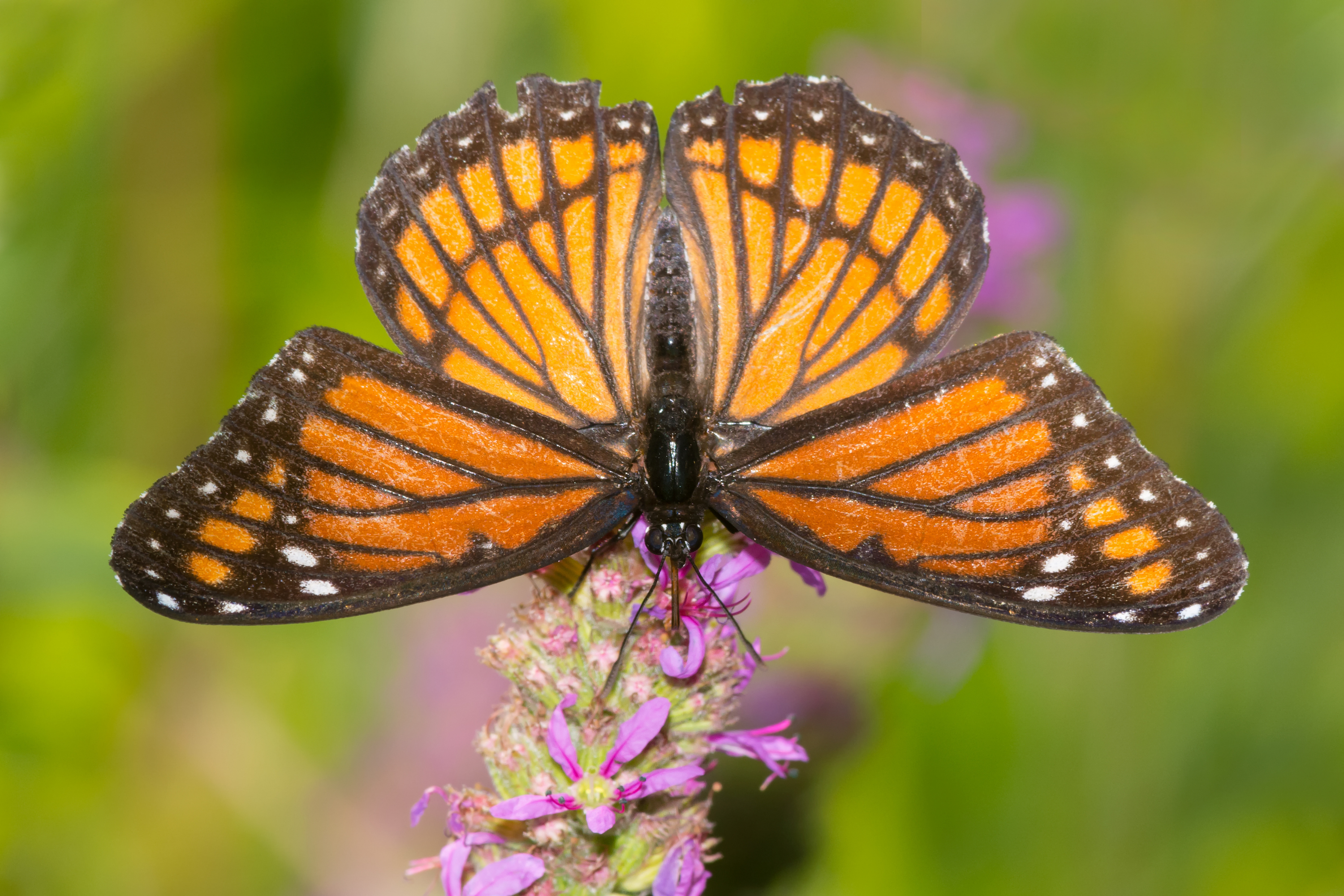Viceroy
(Limenitis archippus)

Description
The viceroy (Limenitis archippus) is a North American butterfly. It was long thought to be a Batesian mimic of the monarch butterfly, but since the viceroy is also distasteful to predators, it is now considered a Müllerian mimic instead. The viceroy was named the state butterfly of Kentucky in 1990. Its wings feature an orange and black pattern, and over most of its range it is a Müllerian mimic with the monarch butterfly (Danaus plexippus). The viceroy's wingspan is between 53 and 81 mm (2.1 and 3.2 in). It can be distinguished from the monarch by its smaller size and the postmedian black line that runs across the veins on the hindwing. In Florida, Georgia, and the American Southwest, viceroys share the pattern of the queen (Danaus gilippus) and in Mexico they share the pattern of the soldier (Danaus eresimus). In all three areas, the local Danaus population mimic the coloration of the viceroy species. It was originally believed that the viceroy was a Batesian mimic of the three other species, and presumed edible or only mildly unpalatable to predators, but this has since proven not to be true. In an experiment with both the monarch's and viceroy's wings removed, birds were discovered to think the viceroy was just as unpalatable as the monarchs. The viceroy ranges through most of the contiguous United States as well as parts of Canada and Mexico. The westernmost portion of its range extends from the Northwest Territories along the eastern edges of the Cascade Range and Sierra Nevada mountains, southward into central Mexico. Its easternmost range extends along the Atlantic and Gulf coasts of North America from Nova Scotia into Texas. It has been possibly extirpated from California. The caterpillar feeds on trees in the willow family Salicaceae, including willows (Salix), and poplars and cottonwoods (Populus). The caterpillars sequester the salicylic acid in their bodies, which makes them bitter, and upsets predators' stomachs. As further protection, the caterpillars, as well as their chrysalis stage, resemble bird droppings. Adults are strictly diurnal, flying preferentially in the late morning and early afternoon. Adult viceroys nectar on milkweeds, thistles, and other common flowers. The world is divided into eight biogeographic realms Palearctic, Nearctic, Afrotropical, Neotropical, Australasian, Indomalayan, Oceanian, and Antarctic.
Taxonomic tree:







